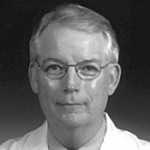CardioExchange invited contributors and members to offer predictions for 2013. Several of these folks also offered predictions for last year and helped assess the most important developments in cardiology in 2012.
What are your predictions for the year?
|
 Steven E Nissen, MD Steven E Nissen, MD
-
The IMPROVE-IT Trial will complete and show no reduction in morbidity-mortality with addition of ezetimibe to simvastatin
-
The new NCEP Cholesterol Guidelines will be released and will no longer
recommend treating to target LDL levels.
-
The HPS Thrive Study will complete and show no benefits for the combination of niacin and laropiprant.
|
|
 Deepak L. Bhatt, MD, MPH Deepak L. Bhatt, MD, MPH
- Continued scrutiny about appropriateness of imaging, EP, and interventional procedures
- Continued consolidation of health care, leading to hospitals merging and an even greater share of physicians becoming hospital employees
- Further shift away from fee-for-service models and toward accountable care organizations
|
|
 Reva Balakrishnan, MD, MPH Reva Balakrishnan, MD, MPH
- With the Affordable Care Act upheld by the supreme court, we will start to see dramatic changes in the healthcare landscape in preparation
- After much anticipation, we’ll finally see the JNC 8, ATP IV and prevention guidelines from the NHLBI and they might be controversial
- More evidence will emerge to support the safety of earlier discontinuation of dual antiplatelet therapy with newer stents; practice will begin to change
|
|
 John Ryan, MD John Ryan, MD
- After initial political resistance, the insurance exchanges and effective realities of the Affordable Care Act will begin to be seen in health care delivery across the US.
- Niacin will fail to show an outcomes benefit in terms of MI/Stroke/Death from the HPS2 THRIVE study, but the majority of physicians will still argue in favor of prescribing it.
- The FDA will streamline the medical device approval process which will result in earlier introduction of medical devices and improved patient access.
|
|
 John E Brush, MD John E Brush, MD
- The country will slowly accept the reality of the ACA.
- Congress will continue to kick the can down the road on the medicare sustainable growth rate (SGR) and true reform of this program.
- We will continue to over diagnose and over treat patients because our incentives are not aligned with the best interests of our patients.
|
|
 Roger Blumenthal, M.D. Roger Blumenthal, M.D.
- ATP IV and its sister guidelines reinforce the importance of primary prevention in high risk patients with multiple risk factors. One of the most important debates in Preventive Cardiology involves the appropriate use of statins in primary prevention. In 2012 members of the Archives of Internal Medicine were outspoken about their position that statins are not appropriate for anyone in primary prevention until trials can unequivocally show an overall mortality benefit with statins. Our group at Hopkins, in conjunction with other leaders in the Preventive Cardiology community continued to endorse selective use of statins in all patients with an elevated estimated absolute risk of a cardiovascular event. This debate spilled over from the Wall Street Journal to JAMA (see here and here) to the Archives of Internal Medicine to the American Journal of Medicine and to Clinical Cardiology. In 2012, the CTT meta-analysis showed benefit with statins across the spectrum of cardiovascular risk, and across the spectrum of LDL levels. However, this paper in Lancet generated many letters to the editor by those advocating for lifestyle therapy only in primary prevention.
- Niacin shows modest but significant benefit in HPS-2 THRIVE. The leaders in the field of atherosclerosis imaging endorse serial high fidelity carotid IMT studies using ultrasound and MRI to help select drugs for development to reduce future atherosclerotic events.
- Digital medicine (as described by Eric Topol) increasingly revolutionizes healthcare and begins to save substantial sums of money for the healthcare system. Eric becomes a regular guest on the Dr. Oz television show with periodic appearances on the Oprah network. His outstanding book becomes the subject of the next Steven Spielberg movie with cameo appearances by Harlan Krumholz and Bill Clinton.
|
|
 Thad F Waites, MD Thad F Waites, MD
- Obamacare rollout will accelerate. Some of it for better and possibly some for worse. The regulations will largely determine the individual results. And the States’ responses to insurance exchanges and Medicaid expansion will largely determine the success.
- CMS will continue to make cuts and changes. There will be many unintended consequences like costs going up when the intention was that costs would go down.
- Electronic medical record use will continue to increase. This will also increase costs but hopefully will improve care.
- The ACC will launch a new digital strategy. This will change the public look but mainly will add member value.
|
|
 James de Lemos, MD James de Lemos, MD
- Hospital systems “game” heart failure care to minimize financial penalties from readmissions, resulting in an overnight cottage industry of heart failure observation units.
- Spotlight is shined on “off label” creep in TAVR procedures
- Applications for cardiology fellowships drop, as applicants (always 3 steps ahead) read the tealeaves regarding changes in compensation forcardiologists.
|
|
 JoAnne M. Foody, MD JoAnne M. Foody, MD
- HPS2 THRIVE predict that this will be negative and reestablish primacy of
LDL reduction
- PARTNER IIb in high risk patients.
- expansion oral anticoagulants in ACS, AF and PE
|
|
 Sanjay Kaul, MD Sanjay Kaul, MD
- Increasing data will emerge to clarify the role of renal denervation as a treatment option in managing refractory hypertension.
- The line between hype, hope, and reality of stem cell therapy for cardiovascular indications will continue to become increasingly blurred.
- The data from IMPROVE-IT and HPS2-THRIVE will force a rethink of the regulatory standard for approval of lipid modifying drugs from biomarker-based to outcome-based.
|
You can follow any responses to this entry through the RSS 2.0 feed.
Both comments and pings are currently closed.
